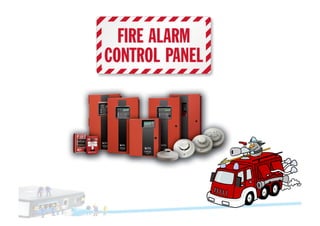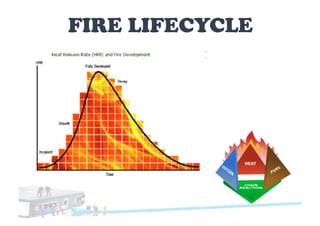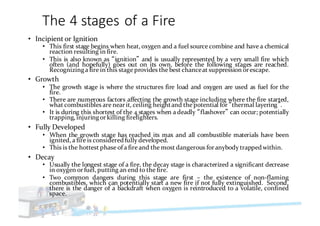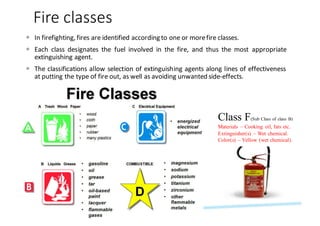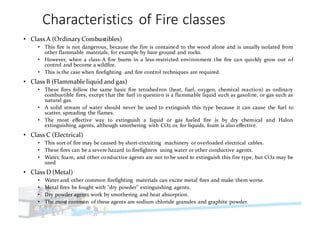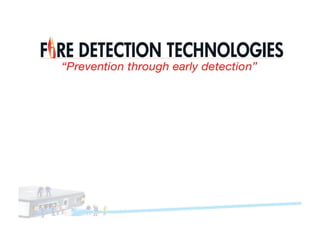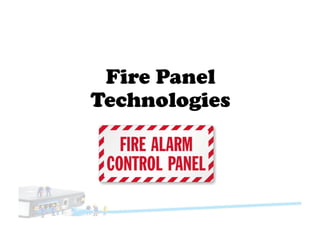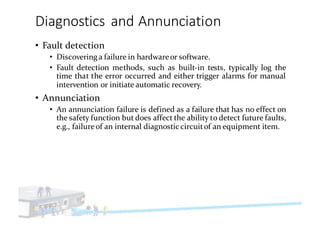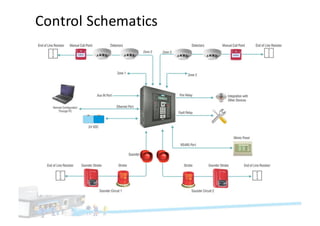The document outlines the four stages of a fire: incipient, growth, fully developed, and decay, each with distinct characteristics and risks associated with them. It also discusses various classes of fire, firefighting techniques, and detection systems including smoke detectors, heat detectors, and fire alarm technologies. Additionally, it explains wiring schemes for fire alarm systems and the distinctions between class A and class B wiring for resilience in fire detection.
